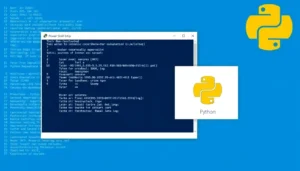Oracle AI cloud revenue: A 2030 Outlook reshaping tech and investing
- THE MAG POST

- Sep 10
- 6 min read

Oracle AI cloud revenue is redefining enterprise software by tying value to AI-powered outcomes rather than standalone licenses. As organizations scale AI workloads, cloud-native services become the default delivery model, challenging traditional spend classifications and forcing vendors to prove measurable impact. This shift matters as CIOs balance agility and cost.
Against this backdrop, investors watch Oracle's cloud gambit with a mix of skepticism and curiosity. The trajectory hinges on contracts, data-center investments, and geopolitical risk, but if AI-fueled offerings deliver efficiency and new workloads, the resulting revenue trail could reshape the competitive landscape for cloud providers across industry verticals.
Oracle AI cloud revenue and the 2030 surge
A bold forecast is shaping cloud strategy: Oracle aims for AI cloud revenue near the USD 140 billion mark by the end of its 2030 fiscal horizon, a target that reframes how enterprise buyers evaluate cloud value and vendor credibility.
Forecasting the AI cloud demand curve
Forecasting demand for AI-enabled cloud services requires integrating product roadmaps, client use cases, and cross industry adoption. Early adopters push margins higher as data-intensive workloads migrate from on-premises silos to scalable OCI environments, pressuring pricing models and performance metrics in equal measure.
Forecast accuracy hinges on multi-year adoption cycles, regulatory considerations, and the capacity to turn AI into measurable business outcomes. If AI capabilities remain accessible, reliable, and secure, uptake accelerates, unlocking a cumulative revenue lift that compounds as enterprises broaden AI footprints across finance, manufacturing, and customer experience domains.
Interpreting the numbers: OCI growth, RPO, and backlog
Oracle Cloud Infrastructure growth is central to the narrative, with analysts watching lane-by-lane momentum across compute, storage, and AI acceleration. A rising remaining performance obligation backlog signals customer intent to commit to multi-year contracts, even as the timing of cash flows depends on project deployment cycles.
Backlog expansion often accompanies strategic cloud deals that embed OpenAI, xAI, Meta and others into a broader AI strategy. The resulting mix of recurring revenue and large-scale commitments shapes long‑horizon profitability while also highlighting the sensitivity of revenue to project onboarding speed and capital discipline.
Drivers of AI cloud growth in enterprise environments
Enterprises increasingly migrate complex workloads to cloud native platforms, unlocking data synergy and faster time to value. Firms seeking competitive differentiation invest in AI-augmented processes, influencing procurement levers, vendor selection, and governance frameworks that align with risk and compliance requirements.
Enterprise AI adoption and workloads
Adoption is not uniform; it follows industry maturity, data readiness, and executive sponsorship. AI workloads in customer service, predictive maintenance, and intelligent analytics create a demand pull that supports higher utilization of OCI resources, making the cloud a strategic asset rather than a mere cost center.
As workloads scale, operational hygiene—model governance, data quality, and security controls—becomes a prerequisite. Organizations that build repeatable AI playbooks achieve faster deployment cycles and better alignment with regulatory expectations, driving sustainable revenue growth for vendors capable of delivering trusted, end-to-end AI solutions.
Strategic partnerships and data-center scale
Partnerships with leading AI developers and platform players amplify Oracle's reach and credibility. The combination of software, hardware acceleration, and global data-center footprint reduces latency and improves service levels, creating a moat that is difficult for challengers to replicate quickly.
Scale also enables more aggressive pricing and flexible consumption models, enhancing customer perceived value. Vendors that can bundle AI-ready infrastructure with industry-specific applications position themselves to capture larger share of multi-year IT budgets, even as competition intensifies in the cloud arena.
Risks and caveats in AI-driven cloud monetization
With ambitious growth targets come meaningful caveats around cost, execution, and market readiness. Capital expenditure, supplier risk, and customer concentration can influence a cloud vendor’s ability to deliver on promised trajectories.
Cost and capital expenditure considerations
AI-driven cloud growth demands heavy investment in data centers, GPUs, and network capacity. While long-term contracts help stabilize revenue, the near-term cash outlays and depreciation schedules can compress margins if utilization lags. Sensible capital discipline and phased infrastructure rollouts become essential to maintain financial resilience.
Companies that optimize procurement, vendor financing, and energy efficiency can mitigate cost pressures. A prudent governance framework for AI projects—covering security, privacy, and ethics—also reduces the risk of costly remediation and reputational damage, preserving investor confidence during volatile market cycles.
Market competition and customer concentration
Competition from hyperscalers and boutique AI players means Oracle must differentiate via performance, ecosystem, and total cost of ownership. Customer concentration risk—where a handful of large deals dominate revenue—requires careful diversification and robust contract terms to protect revenue visibility.
Macro shocks or policy changes affecting cross-border data flows can complicate deployment timelines. In mature markets, customers demand clearer ROI timelines and measurable outcomes, pressuring vendors to demonstrate tangible efficiency gains rather than abstract capability advantages.
Oracle AI cloud revenue projections: strategy, backlog, and capital plans
This section examines the strategic levers behind a bold revenue projection, including contract backlog momentum and the capital plan that supports it. The arc from OCI expansion to enterprise-scale AI workloads is shaped by partnerships, execution risk, and disciplined investment in infrastructure.
RPO expansion and contract backlog dynamics
Backlog growth reflects rising confidence in multi-year AI deployments. A healthier pipeline, when paired with timely execution, translates to predictable future revenue, enabling more aggressive hiring, R&D, and ecosystem investments that sustain competitive advantage over the long run.
Oracle's reported backlog, if sustained, signals a durable demand base across sectors such as finance, manufacturing, and technology services. The challenge remains to convert backlog into realized revenue at a pace that matches investor expectations while preserving profitability margins.
Capex trajectory and execution risks
Capital expenditures are forecast to climb as Oracle scales its data-center network and GPU capacity to meet AI demand. The spend profile must align with contract milestones and utilization benchmarks; misalignment risks cash burn and muted near-term earnings despite a favorable longer-term view.
An effective governance structure for AI investments, including project phase gates and clear ROI criteria, helps ensure capex yields sustained revenue expansion. Transparency on cost drivers and milestones reassures stakeholders while enabling sharper competitive moves in a crowded market.
Implications for investors and cloud practitioners
The Oracle trajectory offers a lens into how AI-driven cloud platforms may reshape investment theses and cloud operations alike. Beyond headline numbers, the real story lies in execution discipline, ecosystem leverage, and the ability to monetize AI capabilities responsibly.
Valuation and scenario planning
Investors weigh multiple scenarios, from base case growth to speculative upside tied to Stargate and partner deals. A disciplined approach considers sensitivity to AI adoption speed, hardware costs, and regulatory constraints that could alter the near-term cash flow profile.
Successful scenarios emphasize durable revenue streams, meaningful gross margins, and a clear path to free cash flow. Stakeholders should monitor contract mix, RPO progression, and capital efficiency to gauge the staying power of AI cloud revenue narratives.
Operational best practices and governance
Operational excellence in AI cloud offerings requires robust data governance, security, and compliance frameworks. Enterprises prioritize transparent governance to manage risk while vendors need clear service level agreements and performance metrics that translate into real-world value.
Best practices emphasize cross-functional collaboration, from product management to legal and privacy teams. This alignment accelerates deployment, enhances trust, and strengthens the overall business case for ongoing AI investments in an enterprise setting.
Key takeaways
The journey toward a durable Oracle AI cloud revenue trajectory hinges on balancing ambitious multi-year targets with disciplined execution, governance, and market clarity. A combination of strategic partnerships, scalable infrastructure, and credible ROI narratives will determine whether the 2030 vision becomes a sustainable reality.
In practice, stakeholders should watch RPO momentum, capex discipline, and the speed of AI deployment across industries. When these levers align, Oracle and its customers can navigate the AI revolution with greater confidence and tangible business impact.
Aspect | Key Takeaway |
Forecasting demand | Growth depends on multi-year AI adoption, enterprise demand, and migration to OCI. |
OCI growth & RPO | RPO backlog signals commitment; steady execution is essential for revenue realization. |
Drivers | Enterprise AI workloads and partnerships extend AI capabilities and scale. |
Risks | Cost, capex, competition, and regulatory factors can affect timelines and margins. |
Capex trajectory | Infrastructure spend rises to support AI scale; governance ensures ROI. |
Investor implications | Monitoring RPO, capex, and deployment speed clarifies long-term value. |






















































Comments